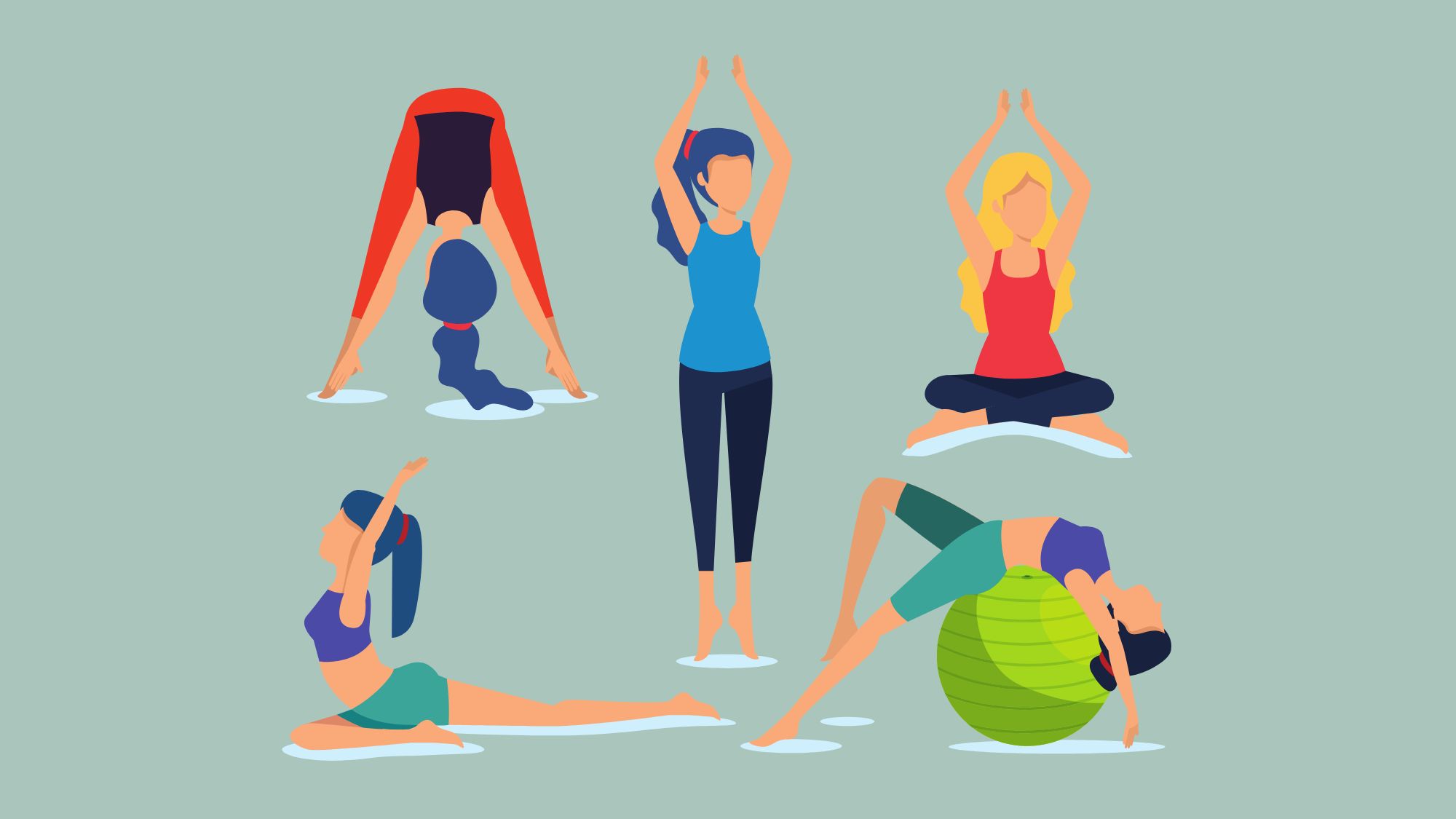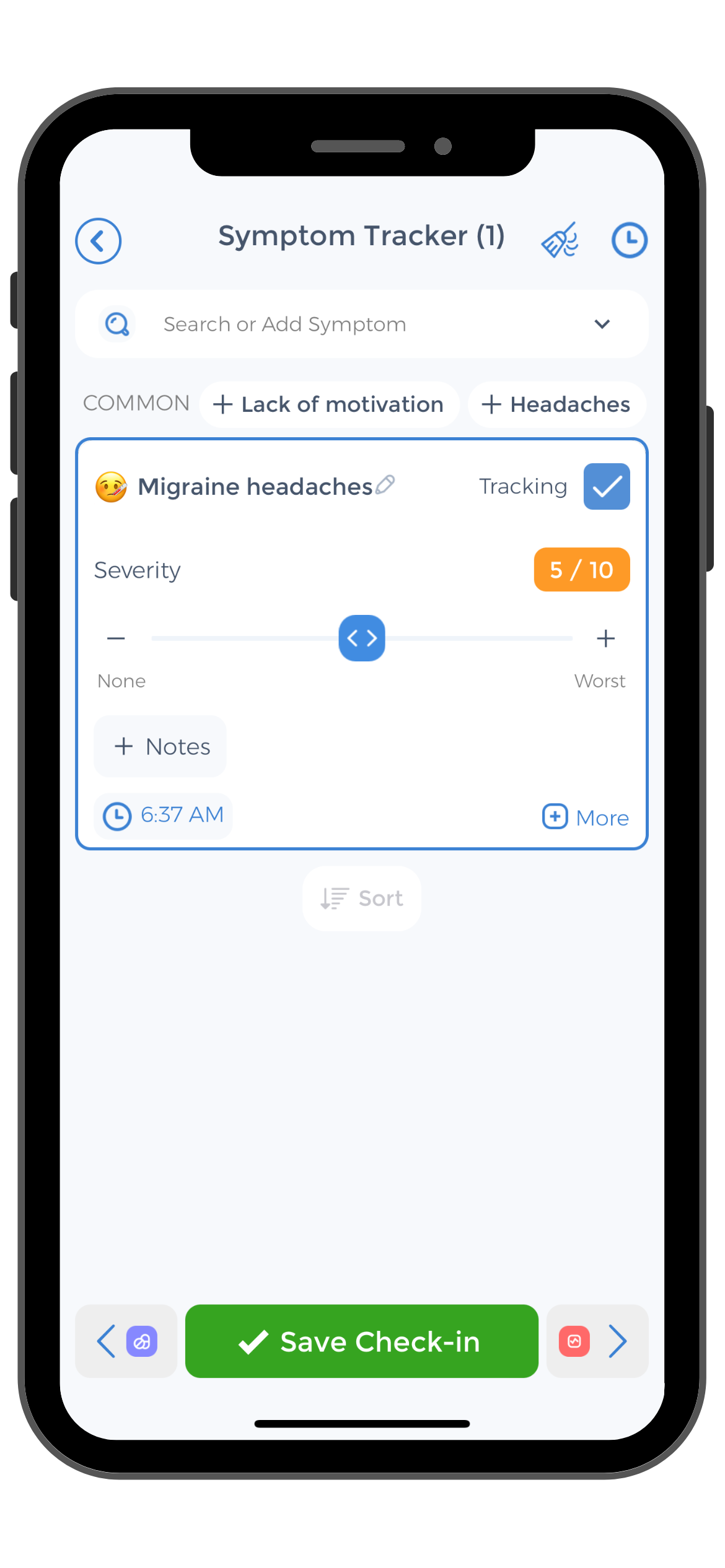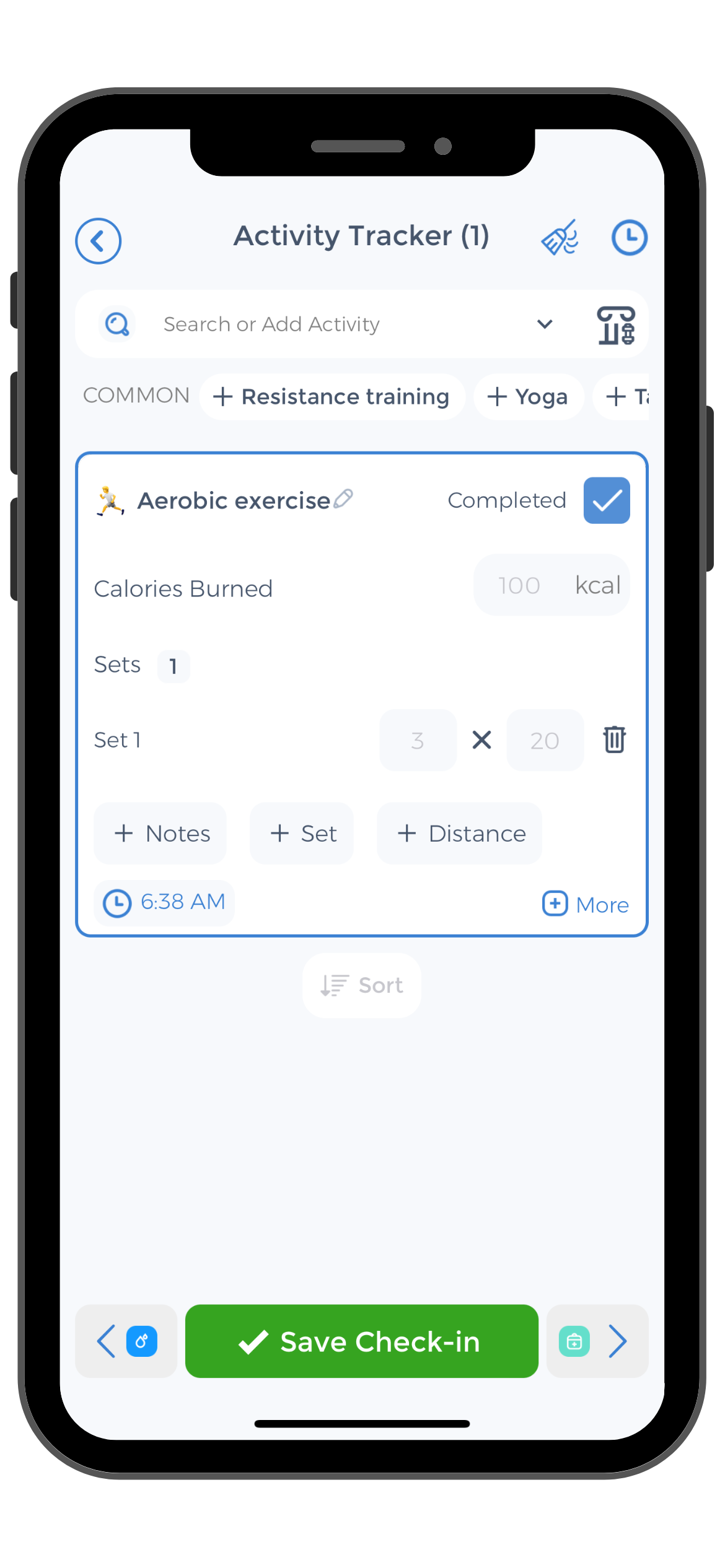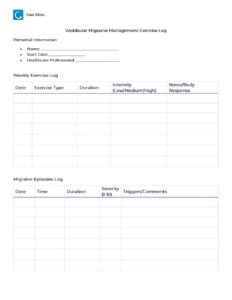
Vestibular migraines can be quite debilitating, causing intense dizziness, vertigo, and balance issues. These symptoms can greatly affect an individual’s quality of life, making it difficult to carry out everyday activities. While medication is often used, incorporating vestibular migraine exercises in your routine can also play a significant role in symptom relief.[1][2]
Understanding Vestibular Migraines
Vestibular migraines are a specific type of migraine that primarily affect the vestibular system. Which is responsible for our sense to maintain balance and spatial orientation. Unlike traditional migraines which typically involve severe headaches, vestibular migraines are characterized by dizziness symptoms, benign paroxysmal positional vertigo, and an unsteady feeling.
Individuals experiencing vestibular migraines may find themselves feeling as though the world is spinning around them, leading to a sense of disorientation and imbalance. These symptoms can be incredibly debilitating, impacting daily activities and quality of life. Seeking medical advice and vestibular treatment is crucial for managing vestibular migraines and improving overall well-being.
Symptoms and Triggers of Vestibular Dysfunction
 The symptoms of vestibular migraines can vary from person to person, but they often include dizziness, vertigo, lightheadedness, and problems with coordination and balance. These episodes can be accompanied by nausea, vomiting, and sensitivity to light and sound. Common triggers for vestibular migraines include stress, hormonal changes, certain foods, and environmental factors.
The symptoms of vestibular migraines can vary from person to person, but they often include dizziness, vertigo, lightheadedness, and problems with coordination and balance. These episodes can be accompanied by nausea, vomiting, and sensitivity to light and sound. Common triggers for vestibular migraines include stress, hormonal changes, certain foods, and environmental factors.
It’s important for individuals with vestibular migraines to keep a detailed journal to track their symptoms and potential triggers. Identifying patterns can help in avoiding triggers and managing the condition more effectively. Additionally, maintaining a healthy lifestyle with regular exercise, proper hydration, and stress management techniques can contribute to reducing the frequency and severity of vestibular migraine episodes.
The Link Between Vestibular System and Migraines
The vestibular system plays a crucial role in maintaining our balance and spatial orientation. When this system is disrupted, it can result in symptoms associated with vestibular migraines. The exact cause of these migraines is still not fully understood, but it is believed to involve a combination of genetic, environmental, and neurological factors.
Research into vestibular migraines is ongoing, with scientists exploring potential treatments that target the underlying mechanisms of this condition. Understanding the intricate connection between the vestibular system and migraines is key to developing more targeted therapies that can provide relief for individuals suffering from vestibular migraines.
The Role of Vestibular Exercises in Migraine Management
Performing exercises such as balance exercises are often overlooked as a treatment option for migraine associated dizziness. But it can be highly beneficial in managing symptoms, including those associated with vestibular migraines. Engaging in regular physical activity can help improve blood flow, reduce stress, and release endorphins, which are natural painkillers and mood boosters.
Moreover, incorporating a variety of exercises into your routine can target different aspects of migraine management. For example, aerobic exercises like running or swimming can enhance cardiovascular health and boost endorphin levels. On the other hand, mind-body exercises such as yoga or tai chi can help reduce stress and promote relaxation. Which are key factors in migraine prevention and vestibular rehabilitation outcomes.
How Exercise and Physical Therapy Helps in Migraine Relief
Gaze stabilization exercises has been shown to have various positive effects on migraines and upper body. Firstly, it improves cardiovascular fitness and blood circulation, which can reduce the frequency and intensity of migraines. Secondly, it helps to release endorphins, which can provide natural pain relief and improve overall mood. Additionally, exercise helps to relieve stress, which is a common trigger for migraines.
Furthermore, regular exercise can also improve sleep patterns, which is crucial for migraine management. Adequate rest and a consistent sleep schedule can help reduce the likelihood of migraine attacks. By establishing a well-rounded exercise routine that includes both physical and relaxation-focused activities, individuals with migraines can experience comprehensive benefits for their overall well-being.
Precautions to Take While Exercising with Migraines
While exercise can be beneficial for managing migraines, it is important to take certain precautions to avoid triggering an episode. It is recommended to start slowly and gradually increase the intensity and duration of your workouts. Additionally, staying properly hydrated, wearing appropriate footwear, and listening to your body’s signals are essential. If you experience any unusual or worsening vestibular symptoms during exercise, it is crucial to stop and seek medical advice.
Moreover, consulting with a healthcare provider or a certified fitness trainer before starting an exercise regimen can help tailor a program that suits your individual needs and migraine triggers. By working closely with professionals, you can develop a safe and effective exercise plan that complements your migraine management strategies and promotes overall health and well-being.[4][5]
Different Types of Exercises for Vestibular Migraines
When it comes to choosing exercises for vestibular migraine relief, it is important to focus on activities that promote balance, coordination, and relaxation. Vestibular migraines can be debilitating, often causing symptoms like vertigo, dizziness, and nausea. Engaging in specific exercises tailored to address these symptoms can significantly improve the quality of life for individuals dealing with vestibular migraines.
Aerobic Exercises for Migraine Relief
Aerobic exercises, such as brisk walking, cycling, swimming, or dancing, can significantly improve cardiovascular fitness and enhance blood flow to the brain, potentially reducing the frequency and severity of vestibular migraines. These activities also stimulate the release of endorphins, which act as natural pain relievers and mood enhancers. For optimal benefits, aim for 30 minutes of moderate-intensity aerobic exercise on most days of the week. Incorporating interval training—alternating between high-intensity and lower-intensity periods—into your routine can further boost cardiovascular health and may help manage migraine triggers.
Starting with low-impact activities and gradually increasing intensity can help you ease into a regular exercise regimen without overexertion. Staying hydrated and choosing enjoyable activities will enhance motivation and consistency. Monitor your exercise intensity to ensure you’re working within a moderate range, where talking is possible but singing is difficult. Regular aerobic exercise not only aids in weight management and stress reduction, both of which can influence migraine frequency, but also empowers you to take an active role in managing your condition. Always consult a healthcare professional before starting any new exercise regimen to ensure it is safe and appropriate for your individual needs.
Balance and Coordination Exercises
Improving balance and coordination is crucial for managing vestibular migraines. Exercises such as yoga, tai chi, and Pilates can help strengthen core muscles and improve stability. These activities focus on controlled movements, breathing techniques, and mindfulness, which can be highly effective in reducing dizziness and improving overall balance. Furthermore, practicing these exercises in a quiet, well-lit room can create a soothing environment that aids in relaxation and stress reduction, both of which are beneficial for migraine management.
Stretching and Relaxation Exercises
Stretching and relaxation exercises can play a vital role in relieving muscle tension and promoting relaxation. Simple stretching routines, deep breathing exercises, and techniques like progressive muscle relaxation can help alleviate stress and reduce migraine symptoms. Incorporating these exercises into your daily routine can greatly contribute to managing vestibular migraines. Additionally, exploring mindfulness meditation techniques alongside these exercises can further enhance their effectiveness in reducing the frequency and intensity of vestibular migraine episodes.
Creating a Personalized Exercise Plan
Designing an exercise plan that suits your needs and abilities is key to effectively managing vestibular migraines. Engaging in regular physical activity can help reduce the frequency and severity of migraines, improve balance and coordination, and boost overall well-being.
Before embarking on your personalized exercise plan, it is crucial to consult with a healthcare provider or a physical therapist specialized in vestibular disorders. They can provide valuable insights into the types of exercises that are safe and beneficial for your specific condition.
Factors to Consider When Designing an Exercise Plan
When creating your exercise plan, it is important to consider your current fitness level, any physical limitations or restrictions, and your personal preferences. Choose activities that you enjoy and that you are more likely to stick with in the long run. Incorporating a mix of cardiovascular exercises, strength training, and flexibility exercises can help improve your overall physical fitness and reduce migraine triggers.
Furthermore, it is essential to pay attention to proper warm-up and cool-down techniques to prevent injury and enhance the effectiveness of your workout. Gradually increasing the intensity and duration of your exercises over time can help prevent overexertion and ensure steady progress in your fitness journey.
Maintaining Consistency and Motivation in Your Exercise Routine
Consistency is key when it comes to reaping the benefits of exercise for vestibular migraine relief. Set realistic goals and create a workout schedule that fits into your daily routine. Finding a workout buddy or using a mobile app like CareClinic can help you stay motivated and track your progress effectively. Remember to listen to your body and make adjustments to your exercise plan as needed to accommodate any changes in your migraine symptoms or overall health.[6][7]
Monitoring Your Progress and Adjusting Your Plan
Regularly monitoring your progress and making necessary adjustments to your exercise plan is essential for long-term success in managing vestibular migraines.
When embarking on a journey to manage vestibular migraines through exercise, it’s crucial to stay vigilant and attuned to your body’s responses. By keeping a close eye on your progress and being proactive in adjusting your plan as needed, you can optimize the benefits of your efforts.
Download Your Free Vestibular Migraine Management Exercise Log
Download Free Vestibular Migraine Management Exercise Log Here
Tracking Your Exercise and Migraine Patterns
Keep a journal or use a mobile app to track your exercise sessions, noting the type, duration, and intensity of each workout. Additionally, record your migraine episodes and any changes in their frequency or severity. This meticulous tracking can serve as a roadmap, guiding you towards a clearer understanding of how your exercise regimen impacts your migraine patterns.
Moreover, by maintaining detailed records of your exercise routines and migraine symptoms, you empower yourself with valuable data that can facilitate informed decision-making when it comes to adjusting your plan for optimal results.
When to Modify Your Exercise Plan
 If you notice that certain exercises trigger or worsen your migraine-associated vertigo, it may be necessary to modify your exercise plan. Consult with a healthcare professional or a migraine specialist to discuss alternative exercises or adjustments that can better suit your needs.
If you notice that certain exercises trigger or worsen your migraine-associated vertigo, it may be necessary to modify your exercise plan. Consult with a healthcare professional or a migraine specialist to discuss alternative exercises or adjustments that can better suit your needs.
Remember, flexibility is key when it comes to managing vestibular migraines through exercise. Being open to modifying your plan based on your body’s responses and seeking expert guidance when needed can lead to a more tailored and effective approach to improving your condition.
Incorporating exercise into your routine can be a valuable tool in managing vestibular migraines. By understanding the benefits of exercise and choosing the right activities, you can take an active role in finding relief and improving your overall well-being. Remember to always consult with a healthcare professional before starting any new exercise regimen.[8]
Use the CareClinic App to Monitor Benign Paroxysmal Positional Vertigo
Take control of your vestibular migraine management with the CareClinic App. This comprehensive health app allows you to track your exercise routines, monitor mild to severe symptoms, and identify potential triggers in one convenient place. With features like medication reminders and a symptom tracker, the CareClinic App helps you maintain consistency in your treatment plan and provides insights into what works best for your body.
By using the app to log your daily activities, you can gain a better understanding of how exercise impacts your migraines and make informed decisions about your health.
Incorporate the CareClinic App to Your Vestibular Rehabilitation Journey
Discover the power of personalized health tracking with the CareClinic App. Its user-friendly interface makes it easy to record your progress, set reminders for your exercise sessions, and adjust your plan as needed. With the ability to analyze trends over time, you can work towards improved health outcomes and a better quality of life.
Don’t let vestibular migraines dictate your day—install the app now and embark on a journey to wellness tailored just for you.
References
- “Vestibular rehabilitation”. https://en.wikipedia.org/wiki/Vestibular_rehabilitation
- “Exercises For Vestibular Migraine – The Vertigo Doctor”. https://thevertigodoctor.com/blog/exercises-for-vestibular-migraine/
- “Vestibular Migraines: Symptoms, Causes & Treatment”. https://my.clevelandclinic.org/health/diseases/25217-vestibular-migraine
- “Effects of vestibular rehabilitation in the management of patients with and without vestibular migraine – PMC”. https://pmc.ncbi.nlm.nih.gov/articles/PMC9760977/
- “Exercise – The Migraine Trust”. https://migrainetrust.org/live-with-migraine/self-management/exercise/
- “Home-based Exercise – Vestibular Disorders Association”. https://vestibular.org/article/diagnosis-treatment/treatments/home-based-exercise/
- “Resistance exercise relieves symptoms of vestibular migraine patients with MRI diagnosis: A randomized parallel-controlled single-blind clinical trial”. https://pubmed.ncbi.nlm.nih.gov/34598780/
- “Tracking Workouts in Migraine Insight – Migraine Insight: The all-you-need migraine app and trigger finder.”. https://migraineinsight.com/track-workouts-in-migraine-insight/
- “Effects of vestibular rehabilitation in the management of patients with and without vestibular migraine | Brazilian Journal of Otorhinolaryngology”. https://www.bjorl.org/en-effects-vestibular-rehabilitation-in-management-articulo-S1808869421001610
- “Introducing the DizzyQuest: an app-based diary for vestibular disorders – PMC”. https://pmc.ncbi.nlm.nih.gov/articles/PMC7718207/





